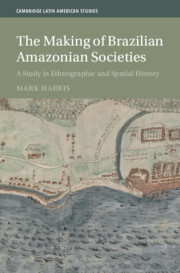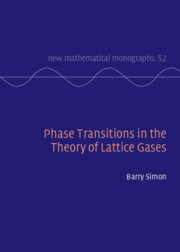Refine search
Actions for selected content:
3388439 results

The Making of Brazilian Amazonian Societies
- A Study in Ethnographic and Spatial History
- Coming soon
-
- Expected online publication date:
- November 2025
- Print publication:
- 30 November 2025
-
- Book
- Export citation

Violín
- Mediating Musical Style and Devotional Practice in 21st-Century Cuba
- Coming soon
-
- Expected online publication date:
- November 2025
- Print publication:
- 30 November 2025
-
- Book
- Export citation

Phase Transitions in the Theory of Lattice Gases
- Coming soon
-
- Expected online publication date:
- November 2025
- Print publication:
- 13 November 2025
-
- Book
- Export citation

Play in the Early Years
- Coming soon
-
- Expected online publication date:
- November 2025
- Print publication:
- 30 November 2025
-
- Textbook
- Export citation

The Ethics of ESG
- Critically Assessing the Environmental, Social and Governance Movement
- Coming soon
-
- Expected online publication date:
- November 2025
- Print publication:
- 30 November 2025
-
- Book
- Export citation
Frontmatter
-
- Book:
- Labour Law
- Published online:
- 02 October 2025
- Print publication:
- 20 November 2025, pp i-viii
-
- Chapter
- Export citation
13 - Freedom of Association and Trade Union Autonomy
- from Part IV - Collective Labour Rights
-
- Book:
- Labour Law
- Published online:
- 02 October 2025
- Print publication:
- 20 November 2025, pp 513-565
-
- Chapter
- Export citation

Emerson, the Philosopher of Oppositions
- Coming soon
-
- Expected online publication date:
- November 2025
- Print publication:
- 30 November 2025
-
- Book
- Export citation
Table of ILO Instruments
-
- Book:
- Labour Law
- Published online:
- 02 October 2025
- Print publication:
- 20 November 2025, pp cxiii-cxv
-
- Chapter
- Export citation
19 - Unfair Dismissal
- from Part V - Termination of Employment
-
- Book:
- Labour Law
- Published online:
- 02 October 2025
- Print publication:
- 20 November 2025, pp 861-917
-
- Chapter
- Export citation

Afro-Mexican Lives in the Long Nineteenth Century
- Slavery, Freedom, and the Writing of History
- Coming soon
-
- Expected online publication date:
- November 2025
- Print publication:
- 30 November 2025
-
- Book
- Export citation

Galen: Writings on Plato's Timaeus
- Compendium of Plato's Timaeus; Commentary on the Medical Statements in Plato's Timaeus
- Coming soon
-
- Expected online publication date:
- November 2025
- Print publication:
- 30 November 2025
-
- Book
- Export citation
Abbreviations
-
- Book:
- Labour Law
- Published online:
- 02 October 2025
- Print publication:
- 20 November 2025, pp cxviii-cxx
-
- Chapter
- Export citation
Table of Other International Instruments
-
- Book:
- Labour Law
- Published online:
- 02 October 2025
- Print publication:
- 20 November 2025, pp cxvi-cxvii
-
- Chapter
- Export citation
Table of Cases
-
- Book:
- Labour Law
- Published online:
- 02 October 2025
- Print publication:
- 20 November 2025, pp xxiii-lx
-
- Chapter
- Export citation
Preface
-
- Book:
- Labour Law
- Published online:
- 02 October 2025
- Print publication:
- 20 November 2025, pp xxi-xxii
-
- Chapter
- Export citation
Contents
-
- Book:
- Labour Law
- Published online:
- 02 October 2025
- Print publication:
- 20 November 2025, pp ix-xx
-
- Chapter
- Export citation
Index
-
- Book:
- Labour Law
- Published online:
- 02 October 2025
- Print publication:
- 20 November 2025, pp 965-988
-
- Chapter
- Export citation
17 - Liability for Collective Action
- from Part IV - Collective Labour Rights
-
- Book:
- Labour Law
- Published online:
- 02 October 2025
- Print publication:
- 20 November 2025, pp 761-814
-
- Chapter
- Export citation
Part III - Statutory Regulation of the Employment Relationship
-
- Book:
- Labour Law
- Published online:
- 02 October 2025
- Print publication:
- 20 November 2025, pp 243-244
-
- Chapter
- Export citation
